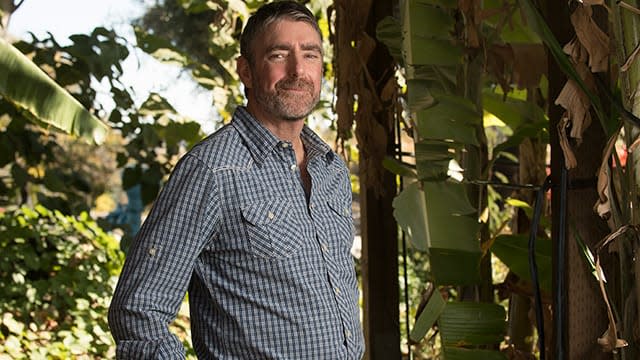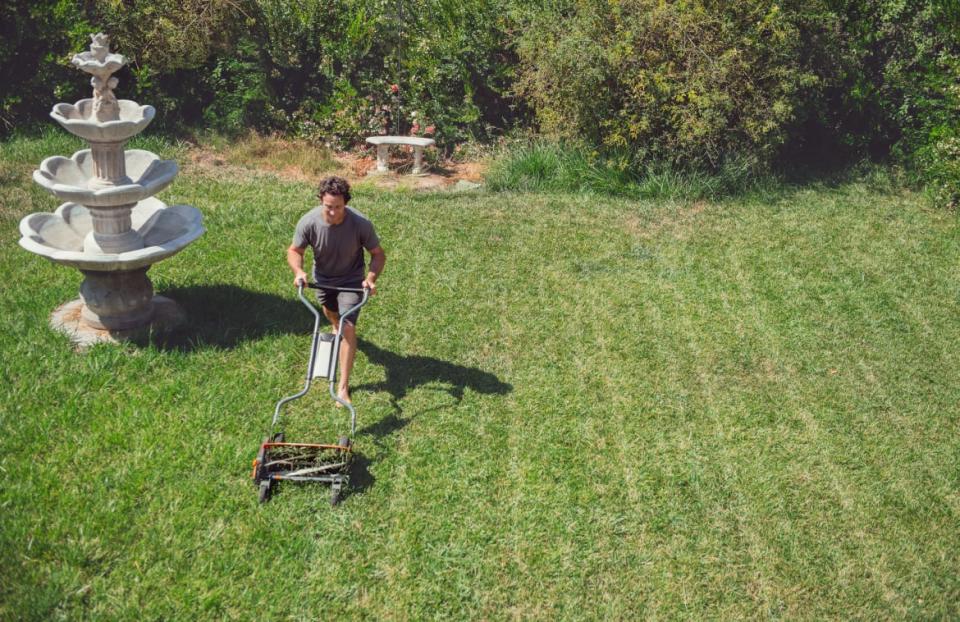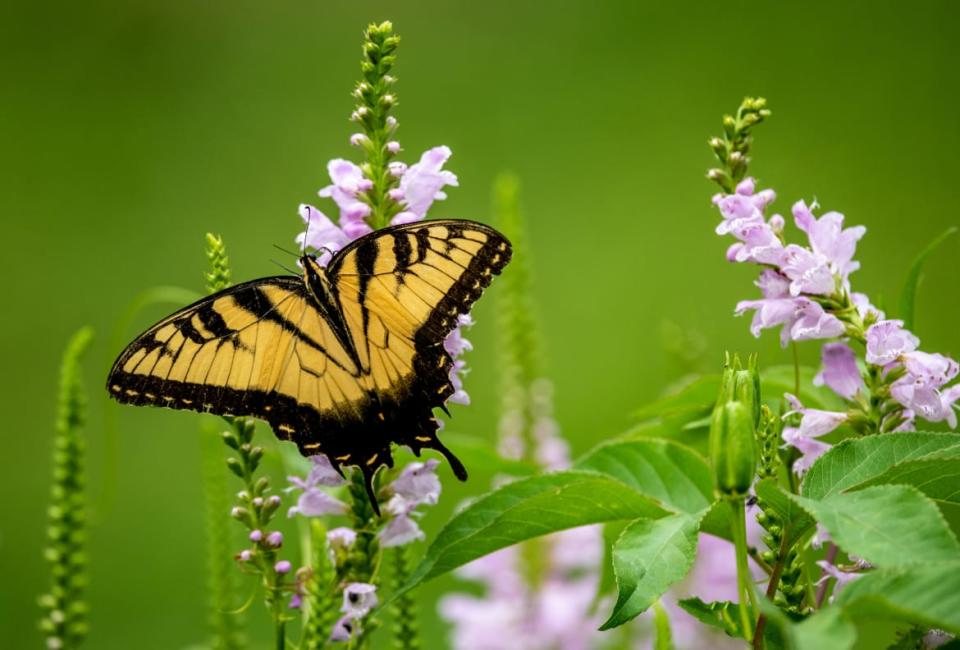Your Lawn Care Tech Is Killing the Planet. Here Are 4 Ways to Fix It.

Douglas Kent began gardening as a teenager. At first, it was only a hobby, but after experiencing California’s 1986-1992 drought firsthand, he began rethinking his interactions with the environment and committed himself to green landscaping, gardening, and activism.
“Gardeners are a big-hearted bunch,” Kent, who is now a landscape contractor and lecturer at Cal Poly Pomona, told The Daily Beast. “So many people pour their hearts into their gardens, thinking that it’s actually really good for the environment, and in many cases, it isn’t.”
He puts it another way, “Sometimes, not everything green is good.”
Kent’s not alone in sounding the alarm on America’s yards and gardens. Department of Transportation statistics show that American lawn-care equipment consumes just under 3 billion gallons of gas per year, and much of that is pure waste. In fact, the Environmental Protection Agency estimates that homeowners spill about 17 million gallons of gas per year just refueling their lawn mowers.

Douglas Kent is sounding the alarm on America’s lawns and gardens.
According to Kent’s research, those statistics just scratch the surface of a far greater issue. He calculates that one acre of turf lawn contributes 3,112 pounds of carbon emissions each year. That carbon cost is equivalent to cutting down and decomposing a 40-year-old oak tree, Kent said. Multiply those emissions by the more than 40 million acres of lawn in the continental United States, and you have more than 124 billion pounds of carbon emissions annually.
Still, Kent acknowledges the utility of turf lawns in providing a ready, “rough and tumble” surface for play and relaxation. “[Turf is] the best surface to get dirty on and stay clean,” Kent said.
Rather than eliminate turf lawns, Kent and like-minded activists propose simple solutions to minimize their environmental costs, and maximize their benefits.
Get Your Hands Dirty
First, Kent encourages people to do their lawn and garden work themselves. This saves gas expended by contractors transporting heavy lawn-care equipment. Next, Kent strongly advises people to try to use manual machines.
While lawn-care equipment like mowers and leaf blowers are far smaller than automobiles, they lack components controlling their emissions. Running a two-stroke lawn mower for one hour can generate as many volatile organic compounds—harmful airborne pollutants that can aggravate human respiratory and cardiovascular conditions—as driving a car for 350 miles.
Stats such as these prompted California to enact a ban on the sale of gas-powered lawn mowers, effective in 2024. The ban should be a boon for electric lawn care equipment. If supplied with renewable energy, electric lawn-care equipment can do the same work as their gas-powered competitors, without any carbon emissions, noxious fumes, or harmful particulates. They also create far less noise pollution.

Manual machines like push mowers offer a carbon neutral alternative to gas guzzling lawn mowers.
Even in California, though, only 33 percent of electricity is generated by renewable sources. Until America’s electric grid goes entirely carbon neutral, electric lawn care equipment won’t be completely green. Still, activists like Kent have environmental concerns related to cobalt, lithium, and nickel in their batteries—minerals that all need to be mined in environmentally harmful ways. However, folks don’t have to worry about any of that with most manual machines.
“You’ve got 3.5 million years of technology in your body,” Kent said with a laugh. “Break it out. Use it. Get dirty!”
Rethink Your Fertilizers
Kent also encourages people to rethink how they fertilize their lawns. Grass cells require nitrogen to produce the proteins they need to grow. Synthetic fertilizers get their nitrogen from ammonia, which is typically produced by combining nitrogen from the air, and hydrogen from natural gas under high pressures and moderate temperatures.
The process won its inventor, Fritz Haber, the 1918 Nobel Prize for Chemistry, and has been credited with increasing global food production and reducing world hunger. However, it’s also a major contributor to global climate and environmental change. A century after its invention, the Haber Process is now responsible for 1-2 percent of global energy consumption and 1.44 percent of carbon emissions.
The Most Considerate Lawn-Mower Thief in History
To cut down on energy costs associated with ammonia production, Kent advocates the use of natural fertilizers such as blood meal and bone meal. According to Dr. Bridget Ruemmele, a professor at the University of Rhode Island’s College of the Environment and Life Sciences, a bit of research can drastically reduce the need to fertilize altogether.
“All of our grasses [in the United States], with the exception of a few species, are actually introduced to our country,” Ruemmele told The Daily Beast. She added that the native grass species that are present in the United States are typically suited to just some parts of the country, not all of them.
Ruemmele said that planting a native grass species, suitable to the regional climate, can reduce the amounts of fertilizer and water a lawn requires. People who are unsure about which species grows best in their area can contact one of their state’s land-grant colleges or universities and an expert, like Ruemmele, should be able to tell them. These experts can also inform citizens of best maintenance practices for their specific species of grass, such as recommended mowing height.
Curb Your Turf
Perhaps the most effective means of reducing resources expended on lawn care is to limit turf to where it’s actually needed. Kent argues that turf is unnecessary in road medians and office parks. Even in yards, he says turf should be restricted to where people and pets play and rest.
“You don’t have to go crazy on your whole back 40,” said Kent. He asserts that limiting turf and increasing a yard’s biodiversity provide tremendous benefits. Trees can provide yards with much-needed shade, reducing water consumption, and weeds can improve soil quality.
However, that doesn’t mean yards should grow untamed and unchecked.
Strike a Beautiful Balance
David Mizejeski is a naturalist and spokesperson for the National Wildlife Federation (NWF), and the former host of Animal Planet’s Backyard Habitat. Throughout his career, Mizejewski has worked to help others understand how their yards and gardens impact the natural world. Like Kent, Mizejewski recommends that homeowners allow a wide range of plant species to flourish in their yards—but they need to be careful.
“One of the misperceptions when you say ‘create a natural garden’ or a ‘wildlife habitat garden’... a lot of people immediately assume that what you mean is let your lawn just go wild, and let it grow like crazy,” Mizejewski told The Daily Beast.
Instead, Mizejewski argues that people can still cultivate aesthetically pleasing yards and gardens that strike a balance between a well-manicured lawn and letting it all grow wild. They just need to pay close attention to what's growing on their properties, promote native plant species, and cull invasive species—which can be rapidly identified using mobile apps such as iNaturalist and PictureThis. Invasive species don’t just compete with and kill off native plants; since animals evolve in tandem with the native plants around them, invasive species are also a major contributor to the world’s declining bird and pollinator populations. Mizejewski said that by promoting native plants and removing invasive species, everyday property owners can make a real, positive impact on their local environments. A recent study by Dr. Desirée L. Narango of the University of Massachusetts Amherst supports his claim.
The Climate Disaster Era of Global Farming Will Be Defined by Drones
Narango’s team studied the effect of native plant concentration on local chickadees. They took a lot, just under 2 acres in size, and divided it into yards of 0.25 to 0.4 acres. Narango’s team found that yards containing at least 70 percent native plants provided adequate food and shelter to support growing chickadee populations. Yards, where invasive species were more dominant, did not.
Narango said that her study shows that promoting native plants, even in small yards, can have noticeable, positive, environmental effects. The benefits exhibited by her experiment, she contends, highlight the need to break down barriers inhibiting environmentally friendly yard management—something that might be at odds with many Homeowners Associations (HOA), which require turf lawn coverage, restrict the growth of native plant species, and mandate the use of environmentally harmful fertilizers and pesticides.
Mizejewski and Narango both argue that HOA regulations that restrict positive yard management must be struck down, or modified to accommodate native species. Narango also encourages consumers to demand that their local retailers sell more native plant species, and stop selling invasive species, especially those banned by state regulations, such as burning bush.

Growing native plants in your lawn and garden could uplift native animal and insect species as well.
“Every time that I go into Home Depot, I complain,” Narango told The Daily Beast.
Despite the obstacles, Mizejewski asserts that real progress has been made. The NWF’s Certified Wildlife Habitat program rewards property owners, schools, and communities for sustainable yard-care practices. Twenty-two years ago, when Mizejewski began working at the NWF, there were only around 24,000 Certified Wildlife Habitats. Today, more than 279,000 private properties, 10,000 schools, and 148 communities have been certified. In 2021, the NWF also established a Garden for Wildlife program, which allows customers to buy native plant collections online and have them shipped right to their door. So far, 12,000 native plant collections have been sold, and sales in 2022 are up 400 percent since the program's launch year.
However, more needs to be done. While evangelical about the benefits of individual effort, Mizejewski admits that to truly turn the tide of global environmental change, collective effort is required.
“The more people [utilize sustainable yard-care practices], the more impact we’ll have,” said Mizejewski. “If I do it, it’s great. I might feed some birds that are flying by, and a monarch butterfly might land on my milkweed ... but if we all do it, even at a small level, we can exponentially increase the amount of habitats in the human-dominated landscape, our cities, our towns, our neighborhoods.”
Got a tip? Send it to The Daily Beast here
Get the Daily Beast's biggest scoops and scandals delivered right to your inbox. Sign up now.
Stay informed and gain unlimited access to the Daily Beast's unmatched reporting. Subscribe now.

 money
money 